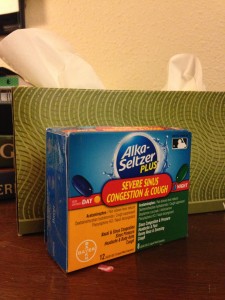
Autumn has arrived and the pollen count has risen. You simply can not stop sneezing and sniffling.
The general allergy symptoms are similar to a common cold, sneezing, nasal congestion, and coughing. There are a few different symptoms that could easily tell you the difference between a cold or allergies, itchy, watery eyes, a running nose, and a stomach ache.
Just before blasts of cooler weather start, approximately 50 million people in the United States suffer from fall allergies each year. Last year, 16.9 million adults and 6.7 million children were diagnosed with hay fever. Once cedar pollen gets into your system, the evilness of it is released and makes people suffer.
“If you know what you are [allergic] to, you can begin taking medications before the [pollens] would be in the air,” nurse Pricilla Ramierez-Westbrook said. “If you are a cedar sufferer, you would take your medication a couple of weeks before cedar season starts.”
For many, relief is just a drugstore counter away with a wide array of traditional medications available to help.
Here are some ways to control your allergies:
1. Find your allergic trigger. Note your surroundings when your allergies flare-up: where you are, what you’ve been doing, what time of day and year it is.
2. Stay clean. Always wash your clothes, hands, and hair to make sure the pollen doesn’t follow you inside.
3. Be persistent. Go back to your family doctor if symptoms don’t improve, or ask for a referral to an allergist.
4. Take an antihistamine. You may be able to find relief with 10 milligrams of cetirizine (Zyrtec) once a day.
As fall season begins, make sure to take the necessary steps to control allergies to keep from suffering this fall.


















